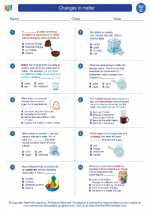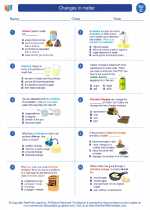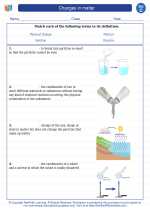Materials
Materials are the substances that make up the physical world around us. They can be found in many forms, such as solids, liquids, and gases. Understanding the properties and uses of different materials is essential in the field of science.
Types of Materials
There are three main types of materials:
- Metals: Metals are solid materials that are typically hard, shiny, and good conductors of heat and electricity. Examples of metals include iron, copper, and aluminum.
- Polymers: Polymers are large molecules made up of repeating units. They can be found in various forms, such as plastic, rubber, and synthetic fibers.
- Ceramics: Ceramics are inorganic, non-metallic materials that are typically made through the process of heating and cooling. Examples of ceramics include glass, porcelain, and bricks.
Properties of Materials
Materials have different properties that determine their behavior and uses. Some important properties include:
- Strength: The ability of a material to withstand applied forces without breaking or deforming.
- Flexibility: The tendency of a material to bend without breaking.
- Conductivity: The ability of a material to conduct heat or electricity.
- Durability: The ability of a material to withstand wear, pressure, or damage over time.
- Transparency: The property of allowing light to pass through a material.
Uses of Materials
Materials are used in a wide range of applications, including construction, manufacturing, technology, and everyday household items. Understanding the properties of materials is crucial for selecting the right material for a specific use.
Study Guide
Here are some key points to remember when studying materials:
- Identify and describe the three main types of materials: metals, polymers, and ceramics.
- Understand the properties of materials, including strength, flexibility, conductivity, durability, and transparency.
- Explore the uses of materials in different industries and everyday life.
- Conduct experiments to test the properties of different materials and observe their behavior.
By mastering the concepts of materials and their properties, you will gain a deeper understanding of the physical world and how different materials contribute to the structures and products we encounter every day.
.◂Science Worksheets and Study Guides Third Grade. Changes in matter

 Worksheet/Answer key
Worksheet/Answer key
 Worksheet/Answer key
Worksheet/Answer key
 Worksheet/Answer key
Worksheet/Answer key
 Vocabulary/Answer key
Vocabulary/Answer key
